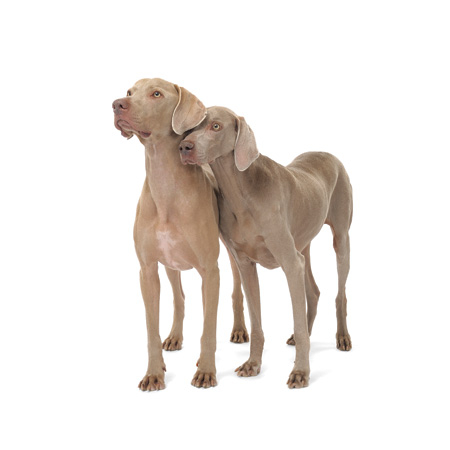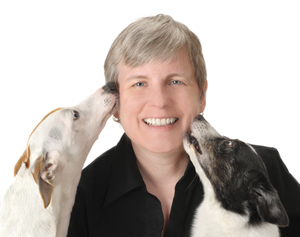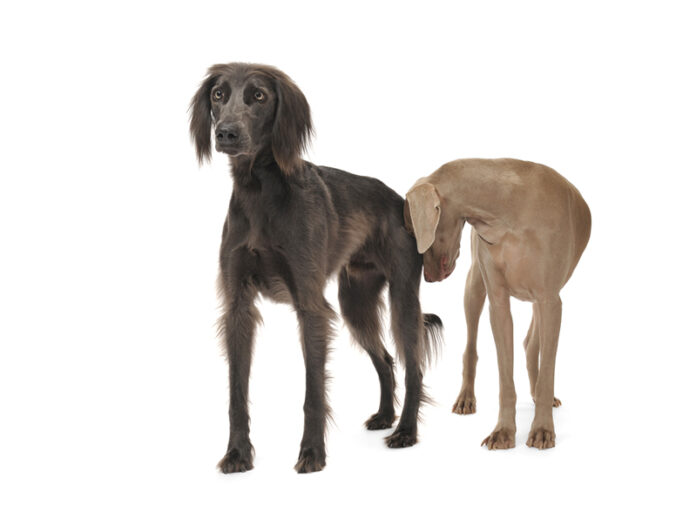by Margaret Bryant
Texas School Instructor
After more than 22 years of photographing dogs, I’ve learned a thing or two about how to handle problem dogs. When I say “problem” dogs, I mean that the dogs are not doing what it is that you want them to do. Since photography is a totally new environment for them, their behavior is not necessarily a “problem”, but it might be undesirable behavior.
I can’t emphasize enough the importance of doing an in person consultation prior to the photo session. You will learn a lot about the dog and the owner during this meeting and set those all important expectations. At the consultation, I ask questions about the dog and I watch the interactions between the dog and the owner. I ask the owner to bring the dog tired and hungry to the consultation and the photo session. Those directions are adjusted according to each dog’s needs.
This list of issues is in no particular order.
• Bouncing off the walls – This phrase describes a dog who is full of energy and is non-stop in their activity. The easiest way to deal with this is to anticipate it. When you are doing an in-person consultation, you will know if the dog has a lot of energy that needs to be burned off before the session begins. The owner should be told to exercise the dog in advance of the session, but the dog will likely “recharge” on the drive to the location of the session. Anticipate the dog will need more activity before the photo session and only let the dog run if it is on a leash or in a fenced in area.
• No obedience – It is rare that I encounter a dog who has no obedience. It is more likely that the dog has some obedience, but with the excitement or fear of the new experience of a photo session, has “forgotten” their commands. Again, doing an in-person consultation will show you what to expect in a photo session. Don’t ask too much of the dog. Usually a dog can be lured into position with a favorite toy or a morsel of food, even if they don’t have any obedience.
• Easily distracted – This problem is a bigger issue doing location photo sessions than sessions in the studio. If you know the kinds of things that will distract the dog, try to choose a location without those distractions. A studio session offers a more controlled environment, so do the session in the studio if the dog is easily distracted by its surroundings.
• Aggressive (biting) – Usually the owner will warn you about an aggressive dog. In any event, you should probably discover this no later than at the in-person consultation. If a dog is aggressive and the owner cannot control the dog, I will not do the photo session. Safety must be paramount during any photo session. If the owner is able to control the dog, I am careful about my own behavior so I do not trigger any aggressive behavior from the dog. For example, I will not make sustained eye contact with the dog and I will be careful not to touch the dog. These actions usually serve me well. By the way, “biters” are usually small dogs, not the large dogs!
• Obsessions – Some dogs are obsessed with things that get in the way of a photo session. I define an obsession as something that the dog pays total attention to the exclusion of everything else. The obsession could be squirrels, food, toys, balls, or something else. You are likely to find out about the obsessions during that old standby, the in person consultation! Anything that the dog is obsessed with should be avoided or removed for the photo session. Dogs have a surprisingly long memory. I found out unexpectedly that a client dog was obsessed with a laser pointer. I never used it again. But for years afterwards, every time the dog came for a photo session, he was looking for the laser pointer.
• Too bonded to the owner – Many times the owner will give you a heads up on this one. If not, you can usually see it during your consultation. There are two ways to approach this. If you have a handler, you can have the owner stand behind you to get the dog’s attention. If you don’t have a handler, or the dog doesn’t want to be that far away from the owner, have the owner right next to the dog, but out of the frame. Save the dog and owner together in the frame for the last images in your photo session.
• Blind – For dogs who are blind, you can still use noise makers and food to get the dog’s attention. Be sure when you are working around the dog that you make the dog aware of your presence. Do not assume the dog knows where you are.

• Deaf – Dogs who are deaf are similar to dogs who are blind. It’s funny how we photographers will still make noises out of habit! I have to catch myself each time I do it! You can use treats, and waving cat toys (feathers) in the air to get the dog’s attention. Again, when you are working with the dog, make sure the dog is aware of your presence.
• Blind, deaf and not food motivated – This one is the trifecta of challenges! In this case, I usually use a cat feather toy and tickle the dog’s nose to get the dog’s attention. It is rare that you get all three issues with one dog, but it does happen, especially with older dogs.
• Old dogs – Since we are talking about older dogs, let’s talk about one more issue with older dogs. I’m speaking of their joints. Older dogs usually have problems with their hip joints. I make the assumption that an older dog will have this problem, even if the owner doesn’t initially mention it. I make the assumption that the dog will stand or lie down. The dog will probably not sit because it is too uncomfortable and so I plan accordingly.
• Fear of flash – This is the one that I think most photographers are concerned about. Especially if you are in the studio and the dog is afraid of the studio strobes. I usually can tell at the consultation if I think the dog is going to be afraid of the flash. Usually the dog is a little skittish, and startles easily. In that case, I will express my concern to the owner and have them make sure the dog is really hungry, and they bring very high value treats with them.
The goal is to make the dog think that the flash brings good things, namely tasty treats. To that end, we start the session with the dog in a room adjacent to the camera room. We flash the studio strobe and immediately give the dog a treat. We repeat the procedure, each time moving closer to the camera room until we are in the room and the dog tolerates the studio strobe.
We don’t always have to go to that much trouble. Usually we can bring the dog into the camera room and take a couple of shots and stop and take a break if there is a problem. Remember, the dog being startled is not the same as being afraid. It is helpful to know dog behavior to be able to tell the difference.
If the plans are for some poses of the dog alone and some with the owner, I will always do the dog alone first, and then the images with the dog and owner together. The reason for this is if I do this in a reverse order, after being next to their owner, the dog may never want to be alone for the remaining images. So to be safe, I photograph the dog alone first and then with the owner.
•Fear of camera – If fear of the flash is not dealt with, it usually evolves into fear of the camera. If this happens, try a couple of different things. First try not to be behind the camera so they see your face and do not pay attention to the giant “eye” of the camera lens. If that doesn’t work or is not possible, try getting the dog comfortable by putting a high value treat on the camera when it is either in your hands, or on the floor. The idea is to desensitize the dog to the camera and its giant “eye.”
•How to deal with dog owners – You can minimize problems with the owners by managing their expectations. I let them know exactly what is going to happen before we do it. If I think there will be a problem with their dog, I express my concerns along with what form of positive reinforcement I will use to make the dog more comfortable.
 Margaret Bryant is an award-winning photographer who specializes in photographing dogs and their people. Her style is simple, original and authentic and often shows the humor and whimsy of dogs. Starting her business in 1998, Margaret has specialized in dogs and their humans from the very start. She teaches a class on “Dog and Pet Photography” at the Texas School of Professional Photography.
Margaret Bryant is an award-winning photographer who specializes in photographing dogs and their people. Her style is simple, original and authentic and often shows the humor and whimsy of dogs. Starting her business in 1998, Margaret has specialized in dogs and their humans from the very start. She teaches a class on “Dog and Pet Photography” at the Texas School of Professional Photography.











